France’s Seine River is famous for running through the heart of Paris’s past landmarks, including the Eiffel Tower, Place de la Concorde, and the Louvre Museum. In popular culture, it’s the place where Inspector Javert from Victor Hugo’s Les Miserables ends his life and the subject of loved paintings such as Sunday Afternoon on the Island of La Grande Jatte by Georges Seurat. With such an incredible reputation, it’s interesting to know some facts about its water, such as how deep is the Seine River running through Paris and is the River Seine polluted. Let’s jump in!
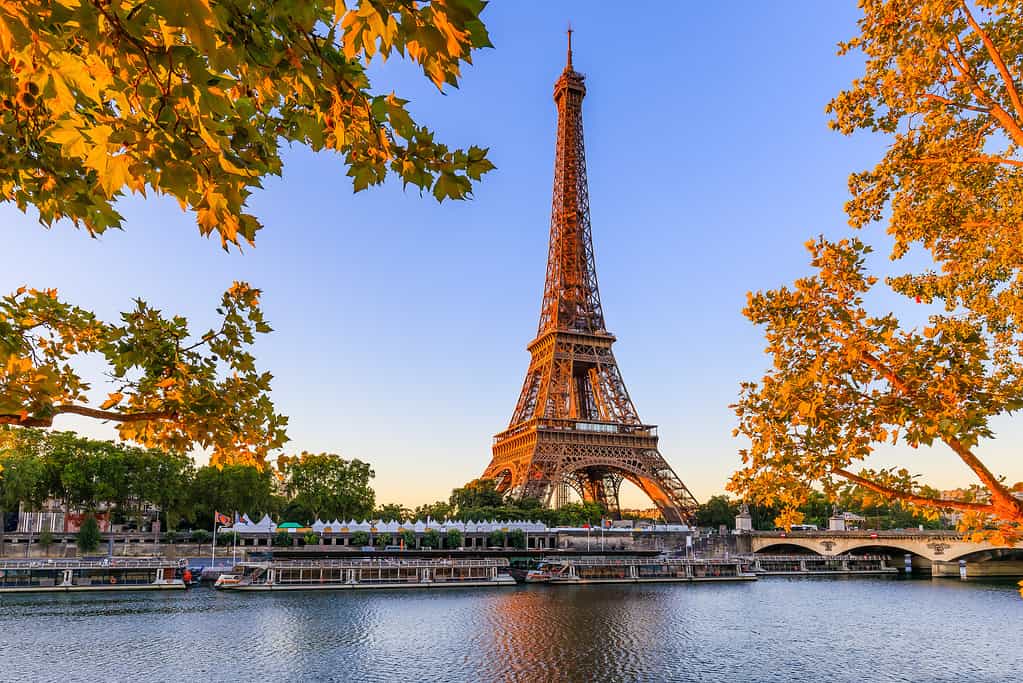
The Seine River runs through Paris and empties into the English Channel.
©SCStock/iStock via Getty Images
How Deep Is the River Seine in Paris?
As it passes through Paris, the Seine River’s depth varies between 10 to 30 feet deep. This section is called the Traversee de Paris, and it’s approximately 18 miles long.
Before 1800, the Seine’s depth was shallower, and it gently flowed past sloping riverbanks. However, in the 1800s, officials installed locks to raise the depth for boats. The modern Seine is built up on either side and usually filled to the brim with water that flows several cubic feet per second. That means it is very slow, but during periods of heavy rain, the water speeds up and threatens floods.
Seine River: Overview
The River Seine gets its name from the ancient Gaullish for Sequana, a Roman river goddess. It’s France’s second-longest river after the 634-mile-long Loire River.
Situated in northern France, its source is located north of Dijon, but it’s owned by the City of Paris. Officials bought it in 1864 and erected a grotto complete with dragon, dog, and nymph statues to mark the place.
The Seine river is long, so it’s nominally divided into five sections:
- The Petit Seine section covers its source to Montereau-Fault-Yonne.
- The second stretch is the Haute Seine, which takes the water into Paris.
- As the Seine meanders past Paris’ monuments, booksellers, and stunning architecture, it becomes the Traversee de Paris or The Paris Waterway in English.
- Moving out of Paris and down to Rouen, it’s called the Basse Seine.
- The Seine finishes its journey from Rouen as the Seine-Maritime and empties into the English Channel.

The Seine River is the second longest in France after the Loire River.
©iStock.com/NicoElNino
How Long Is the River Seine?
Overall, the Seine is 481 miles long. It’s France’s second lengthiest, but the Paris Waterway we’re discovering today is just 18 miles of it. The Seine River’s width varies between 100 and up to 650 feet at its discharge into the English Channel. In Paris, its width meanders between 328 and 492 feet.
Can You Boat Along the Seine?
The Seine is an artery into Paris. In the 800s, Viking raiders used flat-bottomed boats to sail up the Seine River from the English Channel into the town, raid, and return via the Seine. They used the same tactic via the River Thames to raid London.
Today, ocean-going boats can only make it as far as Rouen, which is approximately 75 miles from the Channel, but pleasure boats run the length, especially on the Paris stretch, which is famous for its cruises.
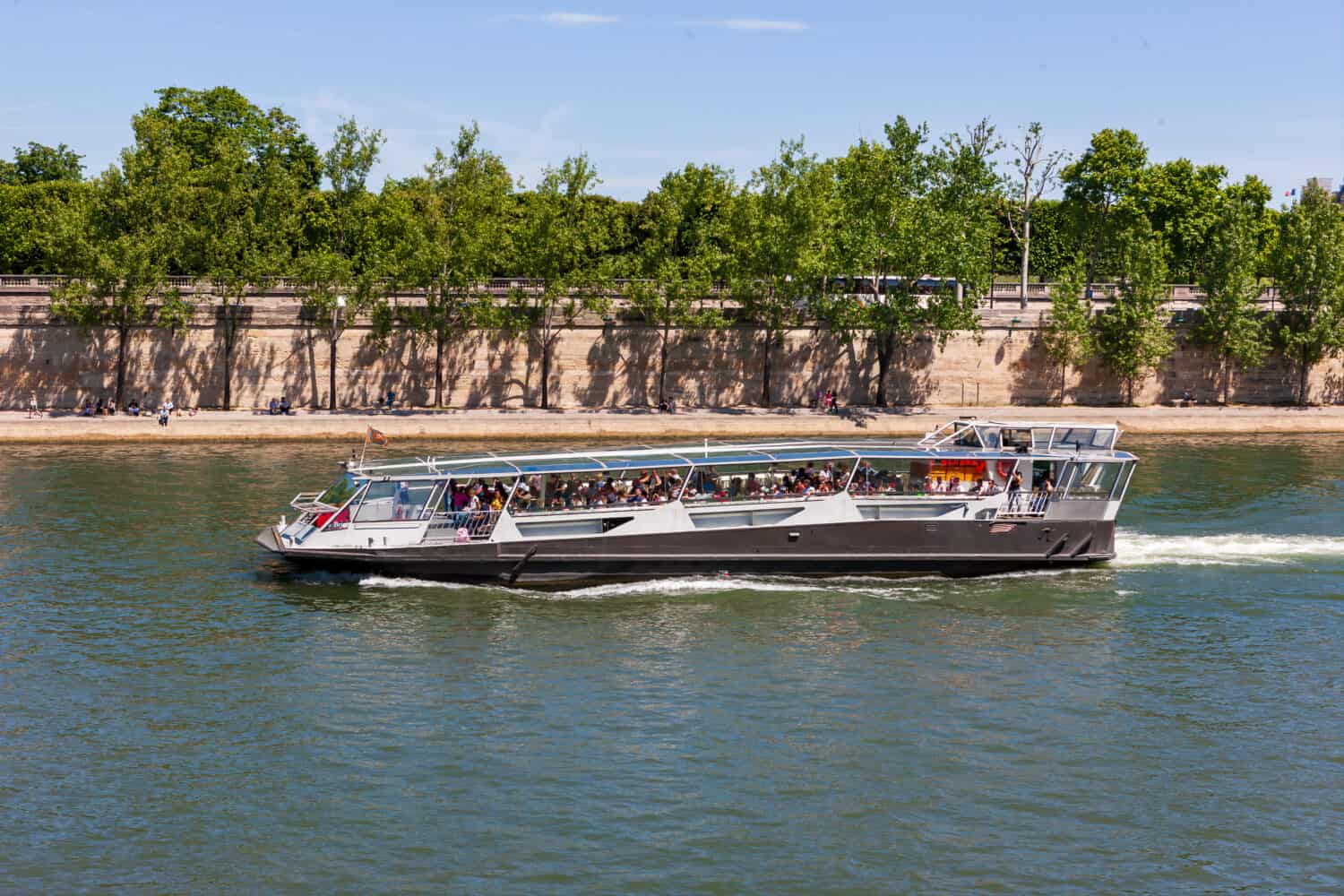
Pleasure boats sail the River Seine through Paris.
©smpoly/Shutterstock.com
Ecology of the Seine River
Despite its polluted history, the Seine River in Paris has made impressive strides to clean up its act. Its water provides habitats to 27 fish species, up from a paltry three in the 1960s.
So, what’s in there?
Sea Lamprey
47-inch-long sea lamprey uses sharp suckers to latch onto fish and suck out their blood. Sea lampreys have traversed the Seine, moving via re-opened locks and waterways.
European Eel
Tough European eels hung on during the Seine’s most polluted times. These long sinuous fish are one of the largest eel species. They can reach over 40 inches long and travel over wetlands when water levels drop.
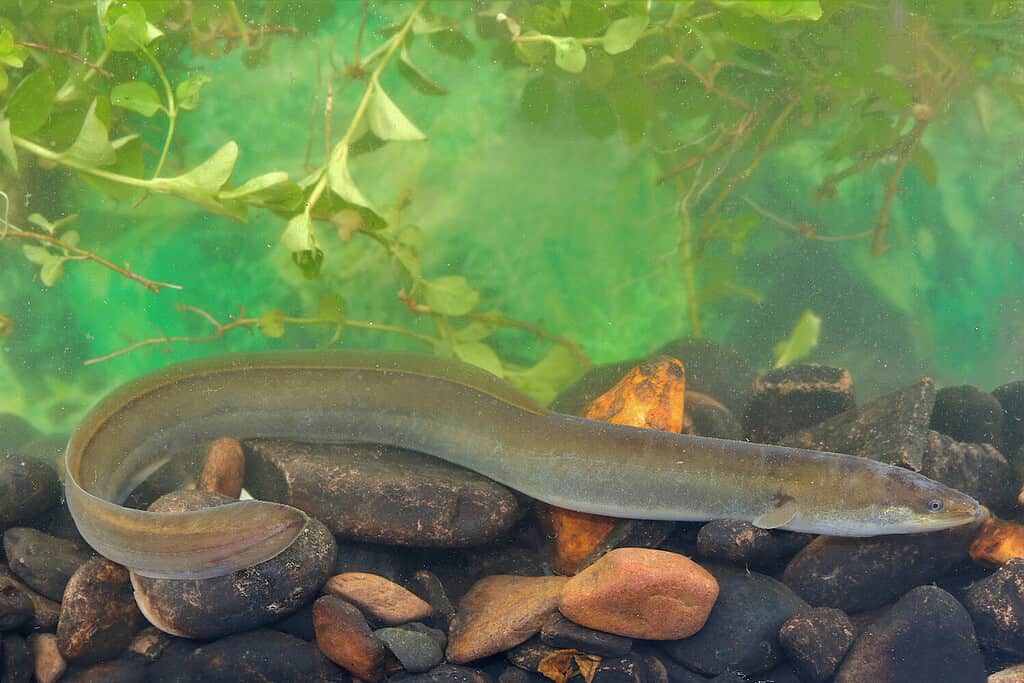
European eels live in the River Seine in Paris. They can reach 40 inches long.
©ABS Natural History/Shutterstock.com
American Red Crayfish
Invasive American red crayfish cause ecological issues in the Seine River because they damage habitats and reduce available food for native crustaceans. These unfortunate crayfish end up on Parisian dinner plates.
Wels Catfish
Introduced to the Seine River as a sport fish, massive wels catfish team along banks and provide one of the easier catches in Paris. These epic catfish reach 150 pounds!
Atlantic Salmon
They were so plentiful in the 17th century that poor folks ate them. They were gone by 1900. Atlantic salmon couldn’t cope with the River Seine’s polluted water and the construction of its locks and weirs. In 2009, a thousand strong shoals appeared in Paris, indicating to ecologists that water clean-up was paying off.
Good news for anglers! Fishing is allowed in Paris’ public waterways with a permit. Cafes and tourist information centers sell daily permits for approximately ten euros per day.
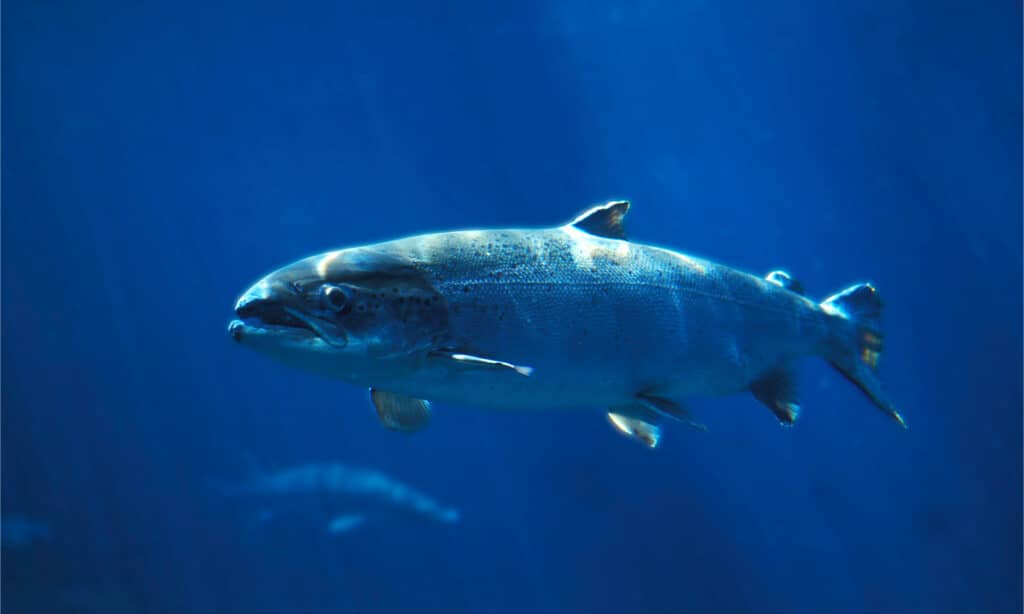
Atlantic salmon have made their way back to the Seine after decades of absence.
©slowmotiongli/Shutterstock.com
Grey Heron
Preying on the Seine River’s returning fish is the grey heron. These slender, lightweight birds blend into Paris’ riverbanks to perfection, and mature trees in Paris’ parks provide nesting sites.
Grey herons easily recognized plumage is chiefly gray with a white crown, pale neck, and pitch-black eyebrows, plus a black shoulder patch.
Dragonfly
Dragonflies dart along the Seine’s banks, catching mosquitoes, flies, and gnats for lunch. These iridescent insects never went away, but today, they number so greatly they’re common.
Is the Seine River in Paris Polluted?
Yes, the Seine River in urban Paris is polluted. In 1923, the authorities banned swimming because industrial sewage dumped there made people very sick, plus the array of boats made it unsafe.
In the 1960s, only three fish species remained in its Parisian waters. Pollution is still a problem today, and swimming in the Seine is punishable by a 15 euro fine, plus a likely vomiting bug from fecal bacteria.
The Seine River’s history of pollution goes back centuries. In the 16th century’s religious wars, bodies were thrown into the Seine. Perhaps the most famous object thrown into the Seine is Joan of Arc’s ashes. Burned at the stake in 1431 at Rouen, records suggest her body was burned several times, and her pyre ashes were thrown from a bridge.
Even now, the discarded cars and television sets dragged out by the government each year reach 360 tons in weight. However, a clean-up operation of the Seine in Paris is underway, with officials hoping to create safe swimming areas in time for the Olympic Games.
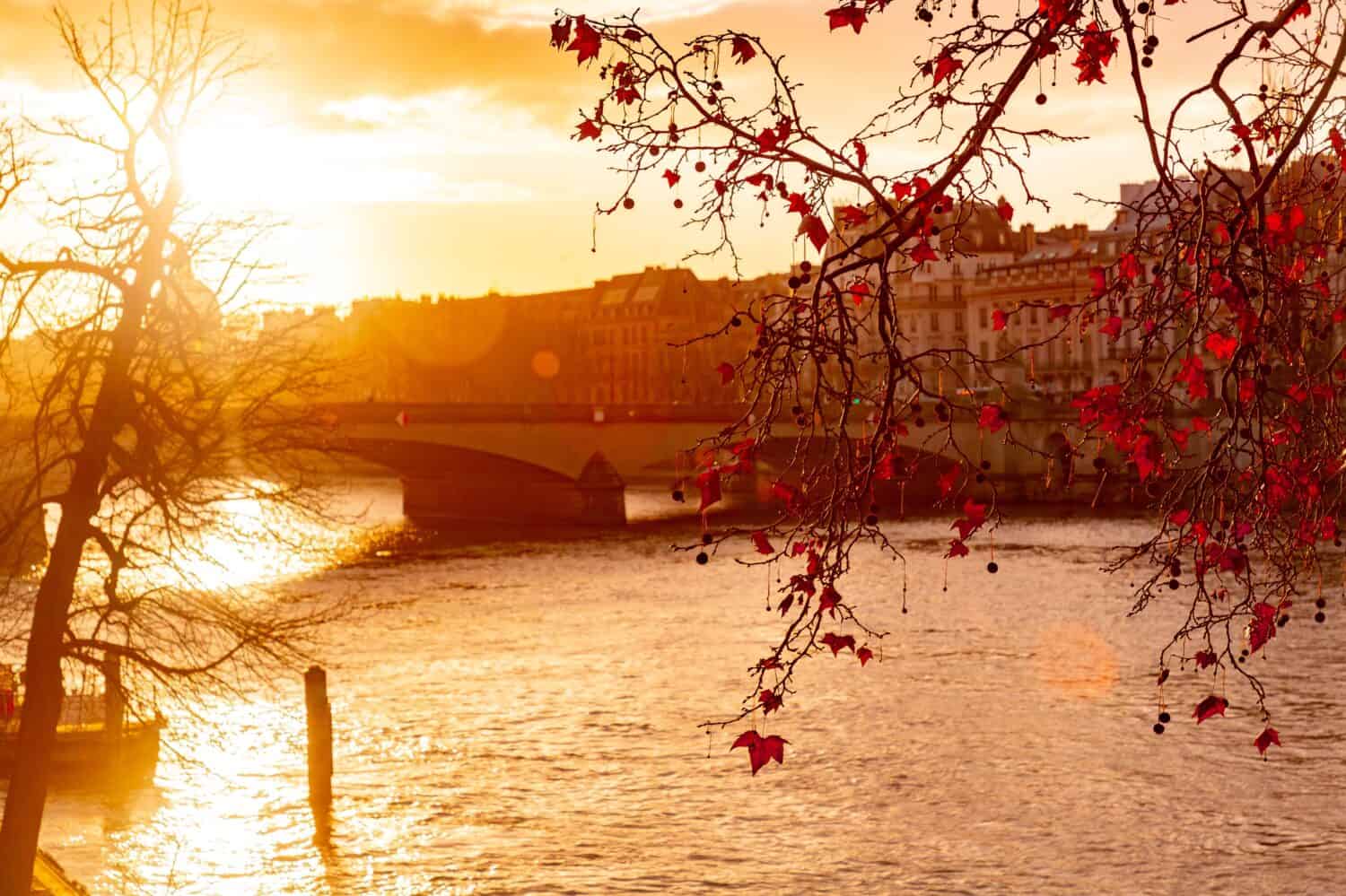
Although it’s beautiful, swimming in the Seine makes people very sick.
©ColorMaker/Shutterstock.com
What to Do on the Seine River
Walking along the Seine is a popular, centuries-old pastime. Various circuits take tourists and locals on circular walks over the Seine’s many (37!) bridges. The Seine’s riverbanks are just as famous as its gently flowing waters. Both sides of the river are UNESCO World Heritage Sites, and they have very different attitudes to life.
La Rive Gauche is the left side (gauche is French for left). Here, it’s all about artisans, writers, painters, and long, lazy hours in a dreamer’s café. Luminaries such as Hemmingway, Matisse, and Picasso lived here.
La Rive Droit is the right side (droit is French for right). La Rive Droit is more about business, trade, and commerce, so in past times it was wealthier. Today, the right bank is home to most tourist attractions, including the Louvre and the Arc de Triomphe.
As with most European city rivers, a romantic boat trip is popular. The river is certainly deep enough to carry numerous pleasure boats all days of the week. Known as Bateau Mouches, these intimate boats float gently past the sights right through the historic center of beautiful Paris.

Boat trips along the Seine are a good way to see the sights of Paris.
©Tomas Marek/Shutterstock.com
How Deep Is Paris’ River Seine?
Let’s recap!
The Seine River running through Paris ranges from 10 to 30 feet deep. It’s a slow-moving, somewhat polluted river that’s suffered from industrial sewage, but a big clean-up operation is beginning to turn it around.
While currently, it’s illegal to swim in Paris’ River Seine, hopefully, future Parisians can test the Traversée de Paris’ depth for themselves.
The photo featured at the top of this post is © iStock.com/NicoElNino
Thank you for reading! Have some feedback for us? Contact the AZ Animals editorial team.






